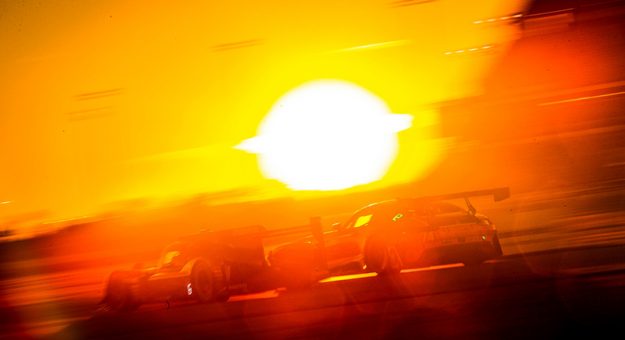IMSA.com Contributor Shares Significance of Season Opener in This Week’s Column
By John Oreovicz
Seems just about everyone has a good reason to look forward to the annual Rolex 24 At Daytona endurance race. Especially those of us who reside in the northern half of the United States.
The traditional opening round of the IMSA WeatherTech SportsCar Championship at Daytona International Speedway is often our first opportunity to escape winter in the Midwest or the Northeast. Partly cloudy and 65 degrees may not sound like postcard-perfect Daytona Beach weather, but in late January it feels warm and wonderful to a northerner after months in the 20s and 30s, sometimes slogging through snow and slush.
In the pre- (and hopefully post-) COVID-19 era, going to the Rolex 24 also meant catching up with friends and colleagues from around the country and even around the world. The media center is filled with sports car journalists hailing from Jacksonville to Japan, giving it an international buzz rarely found at American racing events. Time away from the track includes convivial breakfasts at Hampton’s Restaurant and dinners at Billy’s Tap Room or Anna’s Trattoria.
You probably won’t be surprised to hear that I generally drive to the Rolex, rather than fly. Roughly 14 hours from Indianapolis to Daytona Beach, it is possible to make the trip in one grueling day behind the wheel. But I prefer to break it in two, getting off the interstate when practical and exploring different routes through interesting places.
As long as you’re not taking a two-seat sports car, driving to Daytona also provides the freedom to pack pretty much anything you’ll need to prepare for the wildly varying conditions of Florida’s Atlantic coast in January. High temperatures can soar into the upper 80s; lows can dip into the 20s. Whether the Rolex is run at the hot or the cold end of the temperature spectrum, the warmest and chilliest points of the 24-hour race average a 22-degree spread. And don’t forget the rain gear – more than half of the winter endurance races run at Daytona since 1962 have included at least a trace of precipitation. It’s a tough event for packing light.
Obviously, inclement weather can also be a factor when cross-country driving in January. The days leading up to departure are spent nervously monitoring forecasts, hoping conditions will be favorable – especially for the northern portion of the journey. But you can still run into trouble further south. On one trip to Florida in the early 1990s, photographer Steve Swope and I encountered an ice storm in Georgia. As if trundling along Interstate 75 at 30 mph wasn’t bad enough, Swope’s SUV suffered a flat tire that we had to change in freezing conditions at the side of the road. I think it took a week to thaw out.
In 2013, my then-6-year-old son and I attended the Roar Before the Rolex 24 test days. On this occasion, we flew from Indianapolis to Florida so we could also spend time with family, but a massive storm crippled the Midwest resulting in the cancellation of our flight home. We were unable to find an acceptable alternate flight in the next few days, so we picked up a one-way rental car and headed north. The storm was severe enough that we had to kill a couple days in Bowling Green, Kentucky, waiting for roads to be cleared. All good – it gave us an excuse to revisit the National Corvette Museum and lots of time for arcade games and bowling!
As the first major race of a new calendar year, the Rolex 24 always generates a certain level of excitement. Anticipation has only increased in the modern era, with so many prominent guest drivers across all forms of motorsport turning it into an all-star event in its own right.
For some of us, the thought of spending a few days in a warmer climate in the dead of winter – whether working or just spectating – is an added bonus.
